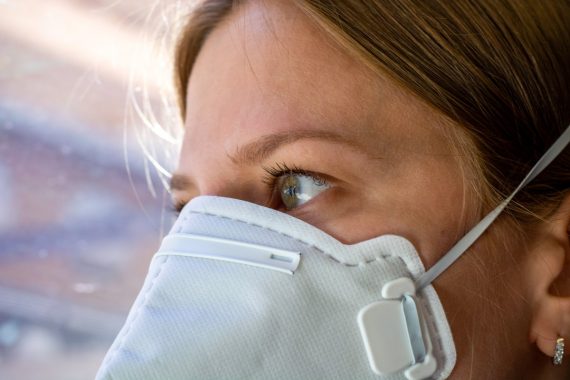Updated guidance for healthcare workers; modifications to mask wearing can substantially reduce Covid-19 exposure
PLEASE NOTE: THIS IS NO LONGER RELEVANT AND IS NOT BEING UPDATED BUT HAS BEEN LEFT ON THE SITE FOR REFERENCE PURPOSES ONLY
This information is sourced from PHE and the CDC:
PHE continue to categorise all patients seen in primary care as either high or medium risk
High risk:
- Untriaged individuals with unknown symptoms
- Confirmed/suspected Covid-19 patients
- Contacts of cases who are awaiting a test result
Medium risk:
- Triaged individuals who are asymptomatic
- No known recent Covid-19 contact
Masks/face coverings should be worn by staff and patients in all clinical and non-clinical areas
PHE recommends the following PPE for direct patient care in primary care:
Surgical face masks Type II:
- should be worn for extended use by healthcare workers (HCW) working within one patient cohort (ie medium or high risk as above)
- change between patients if damaged or soiled
The extent to which medical masks reduce exhalation and inhalation of aerosol particles varies substantially, in part because air can leak around their edges, especially through the side gaps
A CDC paper shows that both of the following mask modifications both substantially improved reduced wearer exposure to Covid-19:
- fitting a cloth mask over a medical procedure mask
- knotting the ear loops of a medical procedure mask and then tucking in and flattening the extra material close to the face
Gloves:
- worn when exposure to blood and/or other body fluids, non-intact skin or mucous membranes is anticipated or likely
- change immediately after each patient and/or after completing a procedure/task even on the same patient
- never decontaminate with Alcohol Based Hand Rub (ABHR) or soap between use
- double gloving is not recommended for routine clinical care of Covid-19 cases
Aprons:
- worn to protect clothes when contamination is anticipated or likely
- worn when providing direct care within 2 metres of suspected/confirmed Covid-19 cases
- changed between patients and/or after completing a procedure or task
- gowns are only required if there is a risk of spraying / splashing
Eye or face protection (including full-face visors or goggles):
- should be worn when there is a risk from splashing of secretion (including respiratory secretions)
- single use or re-usable are recommended
- regular glasses are not considered eye protection
- should not be touched when being worn
Advice for vaccination clinics:
- In some settings, such as vaccination clinics, where contact with individuals is minimal, the need for single use PPE items for each encounter, for example, gloves and aprons is not necessary
- Staff administering vaccinations must apply hand hygiene between patients and wear a sessional facemask
FFP3 masks are not recommended for primary care; they are recommended for aerosol generating procedures
Single use means between patients. Sessional use means a session in one clinical setting
Written by Dr Poppy Freeman
See also:
Hand Hygiene and PPE related dermatitis














